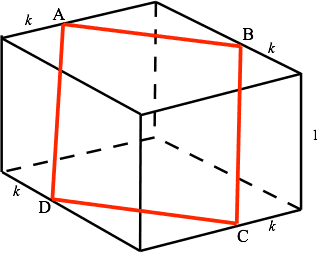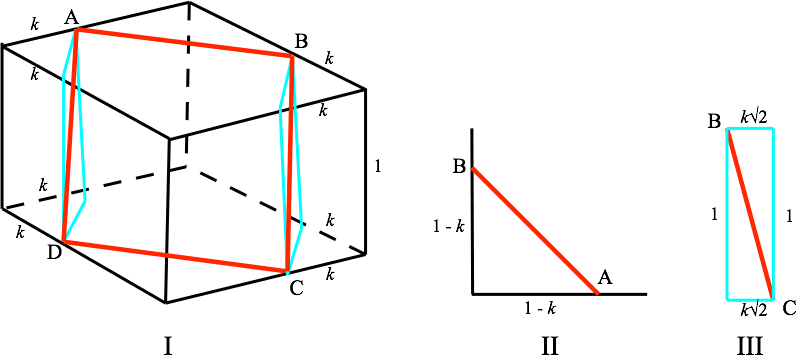The figure shows a cube with unit edge and four points , placed on four edges at a distance from a vertex, where .
(a) The quadrilateral is planar. Justify this assertion.
(b) Find all values of that make a square.
(c) What are the sides of those squares?

Solution
(a) For students who are comfortable in 3-dimensional analytic space, it is easily checked that the equation of the plane containing ABCD is . For others, we are groping for a good old-fashioned Euclidean justification. The old "as any fool can plainly see" is tempting. If any of you out there can help with this, please do so!
(b) is a square when . We express both those lengths in terms of , set them equal and solve.
For we see from the figure, part I, that it is the hypotenuse of an isosceles right triangle with legs of length . That makes . See the figure, part II.
As for , it is the diagonal of a rectangle with sides of length and . This makes .
Setting these two equal, we find that
The only value of that works is 1/4.
(c) For , the side is
Check:
